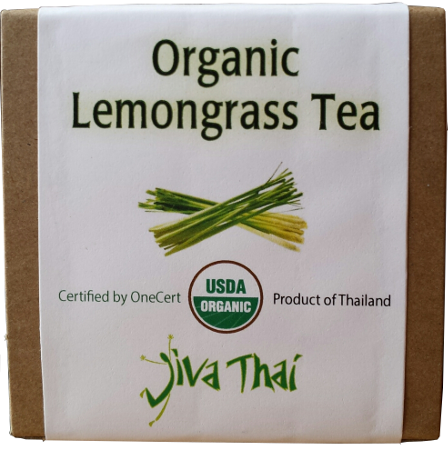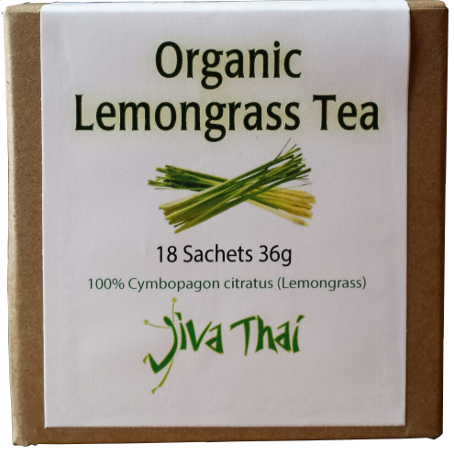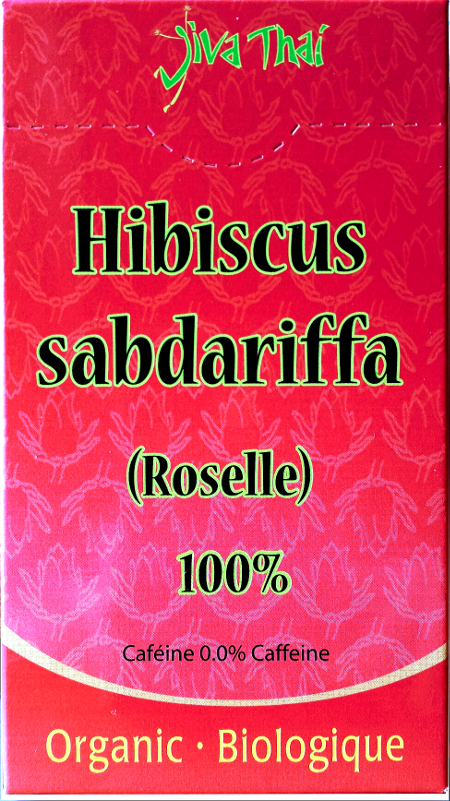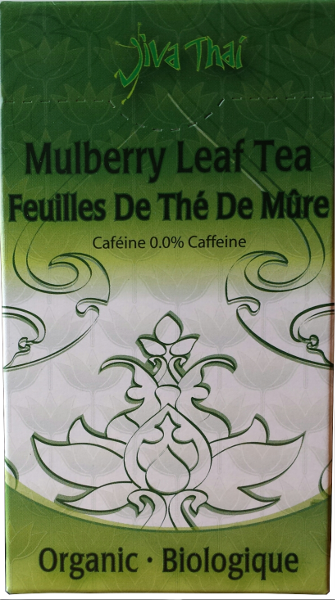- Details
- Category: Herbal Tea
 |
 |
Lemongrass is a culinary herb which provides a strong flavour and is full of health benefits. Lemongrass has nutrition that is good for our body like calcium, phosphorus, iron, and vitamin A. Essential oil in lemongrass has the following components: menthol, cineole, camphor and linalool which help reduce intestinal motility. Studies showed that lemongrass essential oil, extract and tea help relieve symptoms of dyspepsia, colic pain, and stomachache. Also, borneol, fenchone and cineole in lemongrass increase the release of bile in aiding digestion.
Chemical compounds in essential oil of lemongrass like citral, citronellol, geraneol, cineole and myrcene can inhibit growth and kill some bacterias (i.e. E. coli, Shigella flexneri, Bacillus subtilis, and Samonella typhimurium) and fungi (i.e. Trichophyton mentagrophytes, T. rubrum, Epidermophyton floccosum and Microsporum gypseum). Research found that citral, a major component in lemongrass, exhibited action against Candida species which cause many common infection of the skin, oral cavity and esophagus, and vagina in human. In addition, its components were reported to have antiviral activity against Herpes simplex virus-1.
Traditional medicine uses lemongrass for:
- relieving cold symptoms, headache, cough, asthma, fever;
- treating flatulence, colic, intestinal gas, stomach ache and diarrhea;
- strengthening the digestive system;
- increase appetite;
- relieving joint pain, muscle ache, bruises and leg swelling (fluid retention)
- treating diseases related to urinating tract, calculous, bladder, irregular menstruation, hematuria;
- lowering high blood pressure; and
- treating gonorrhea.
- Details
- Category: Herbal Tea
Hibiscus tea is a refreshing drink commonly found in the tropic and sub-tropic regions. It is used as a food ingredient due to its red colour and sour taste.
The calyx (fruit) naturally contains many constituents like alkaloids, l-ascorbic acid, anisaldehyde, anthocyanin, β-sitosteral, citric acid, cyanidin-3-rutinoside, delphinidin, galactose, gossypetin, hibiscetin, mucopolysaccharide, pectin, protocatechuic acid, polysaccharide, quercetin, stearic acid and wax.
It has been reported that many of these phyto-constituents have a variety of biological effects including diuresis, antihypertension and hypocholesterolemia. In a study, a concentration of 5mg/ml 1 of roselle showed a remarkable antioxidant effect in inhibiting LDL (low density lipoprotein) oxidation. It was more effective than 100μm of vitamin E.
Research also showed that hibiscus could help prevent the development of atherosclerosis and cardiovascular pathologies associated with diabetes. It significantly reduced body weight gain in obese mice and increased liquid intake in healthy and obese mice.
Its medicinal uses are such as for
-
Reducing lipids in blood vessels,
-
Lowering blood pressure,
-
Reducing weight,
-
Assisting in digestion, increasing secretion of bile from liver,
-
Helping treat angiopathy,
-
Treating calculi in kidney and gallbladder,
-
Dissolving mucus (a mucolytic agent)
|
|
 |
- Details
- Category: Herbal Tea
 |
What is mulberry tea?
Mulberry leaf tea is the infused of dried mulberry leafs in hot water. Indigenous medical practitioners use different parts of the mulberry for treating diseases and symptoms such as high-blood pressure, high blood cholesterol and lipids levels, arterial plaques, diabetes, diuresis, constipation, cough-phlegm, cold, anemia, inflammation, etc. Scientific results have shown that the antioxidant role of mulberry leafs gives several medicinal benefits.
What are the benefits of mulberry tea?
Several recent scientific studies from around the world confirm the medicinal properties of dried mulberry leafs. For example, mulberry leaf treatment raises insulin sensitivity and induces hypoglycemia. Also, dried leaf powder of mulberry and extract of infused dried mulberry leaves helped control hyperglycemia, glycosuria, albuminuria and retarded onset of retinopathy. The use of the mulberry-leaf powder in ice-cream showed reducing of blood glucose level in consumers, instead of rising.
Long-term studies suggest that mulberry leafs have various medicinal effects on adult diseases. Some of those are:
- Reducing level of blood sugar and preventing diabetes and obesity (anti-hyperglycemic, glucosidase inhibitor, etc);
- Suppressing hypertension;
- Lowering bad cholesterol;
- Preventing cancer (liver);
- Suppressing mutagenesis of carcinogens;
- Against ischemia damage;
- Suppressing inflammatory mediators;
- Potentially preventing Pb toxicity.
What are the therapeutic compounds in mulberry leafs?
Various compounds present in mulberry leafs that attribute to therapeutic benefits are such as:
GABA (Gamma Aminobutyric Acid) maintains the normal blood pressure and enhances the neuroprotection effect against ischemia damage.
Phytosterol and flavonol quercetin 3 reduce LDL in blood vessels.
DNJ (Deoxynojirimycin) helps reduce sugar in the blood stream: lowers the risk of getting heart disease. It also stimulates the blood circulation and increases the fluid in the body.
Prenylated flavonoids in mulberry leaves are antimicrobial and anti-inflammatory agents.
Where is the Mulberry Tea from?
The tea is grown organically in rural areas, near the natural water sources in Thailand. We only use top young leafs for tea.
How to make a nice cup of Mulberry Tea?
One teabag for one cup of tea, pour boiling water onto the teabag. Let infuse for 6 minutes. Leave the teabag in until you finish the tea. Alternatively, you can tear open the tea bag, pour the tea powder out and drink everything in the cup for optimal benefit.
Mulberry greens give no bitter taste. The longer you brew it, the better the taste and the more antioxidant quality.
Page 2 of 2



